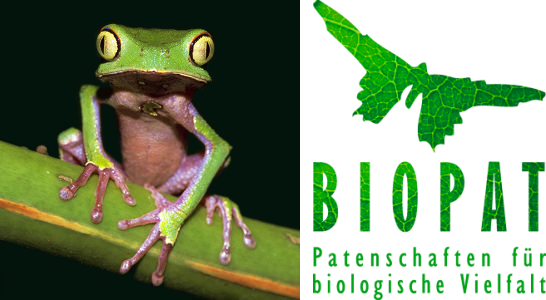New species ?
 Vulcano Queen
Vulcano Queen
Discovery of new animal and plant species
In a process largely unnoticed by the public, biologists labour away every day identifying new animal and plant species. Almost 10,000 new species are documented each year by researchers. To date, about 1.8 million species have been recorded; but it is estimated that this accounts for less than 10 per cent of all the animal and plant species in existence. In exceptionally species-rich groups of organisms -insects, for example -only a tiny proportion of the species in existence are known to science. But we are also constantly being surprised by spectacular discoveries of large-scale mammals such as monkeys, deer, and even whales.
It is only in the last few years that scientists have become aware of the true extent of biological diversity. It encompasses not only all the different animal and plant species, from the ant-eater to the zinnia, but also the diversity within a single species (genetic diversity-we need only think of the incredible differences between one person and another). This diversity is also partly determined by differences in habitat: living conditions in a pond in the German "Black Forest" are obviously very different from those in the Himalayan uplands or on the south coast of Australia.
This diversity, which researchers call 'biodiversity' or 'geodiversity' -or, taken together, 'ecodiversity'- is regarded as a basic precondition for the survival of the 'terrestrial community', to which also the human beings belong.
Biodiversity also offers enormous scope for discovering new active ingredients for use in medicines, or for exploiting previously unknown dye-stuffs or biotechnical characteristics useful to humans. Extract of Madagascan periwinkle, for example, is used to fight leukaemia in children; many snake-poisons are used in the production of heart medicines; and the surface of lotus leaves has been simulated to create non-stick surfaces. The genetic features of many wild organisms can help improve the yield and resistance of agricultural plants and animals, thus helping to feed the world's population. But the exploitation and destruction caused to previously undisturbed areas by an ever more rapidly increasing world population is causing countless species to die out without any human being ever having researched or made use of them.
Most of the species which, even today, continue to be discovered on almost every scientific expedition, are new discoveries in the classical sense-meaning that no other researcher has ever held them in his or her hands. But the inaccessibility of many tropical habitats means considerable technical and financial resources are needed to finance such research-trips.
